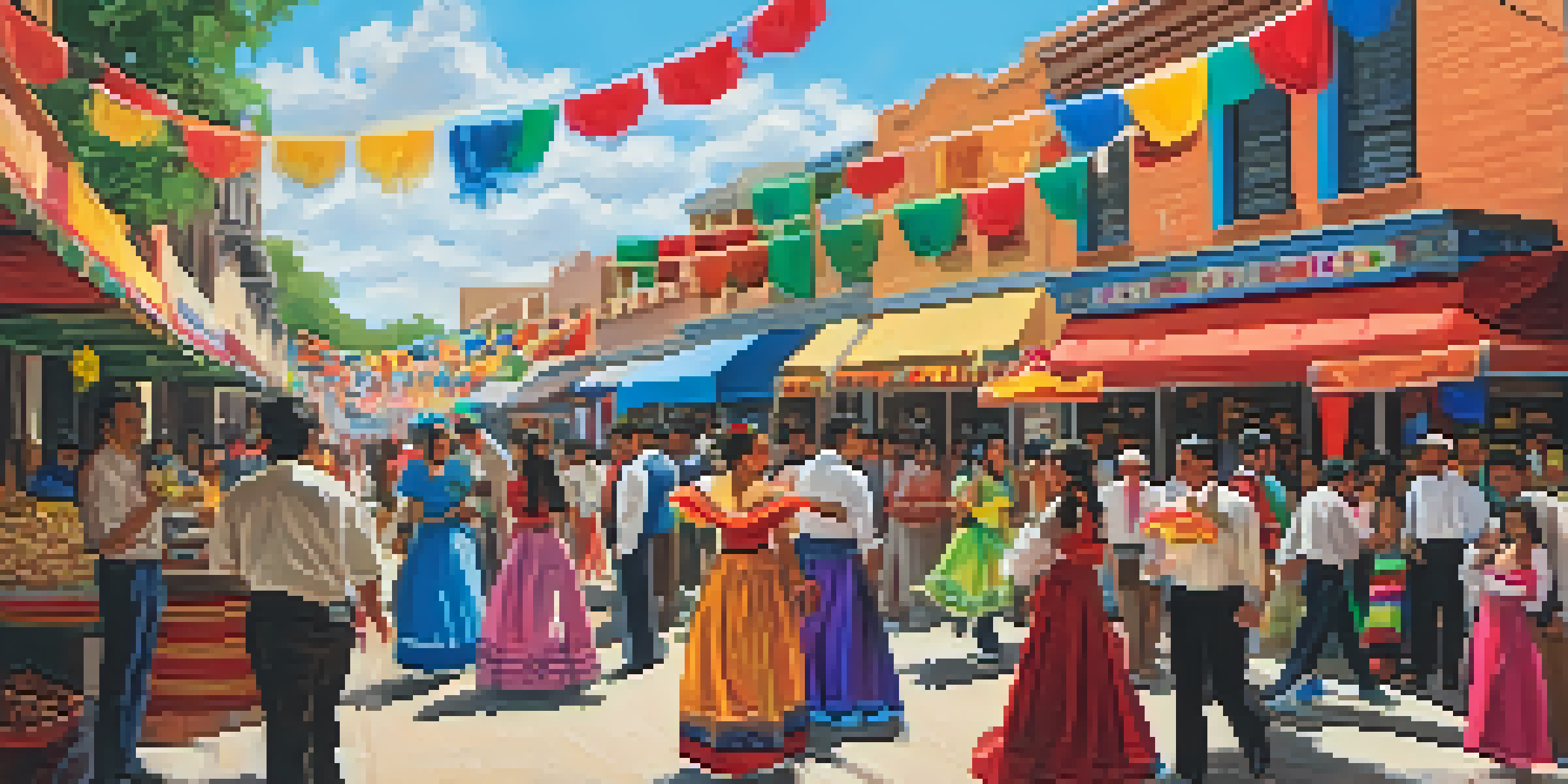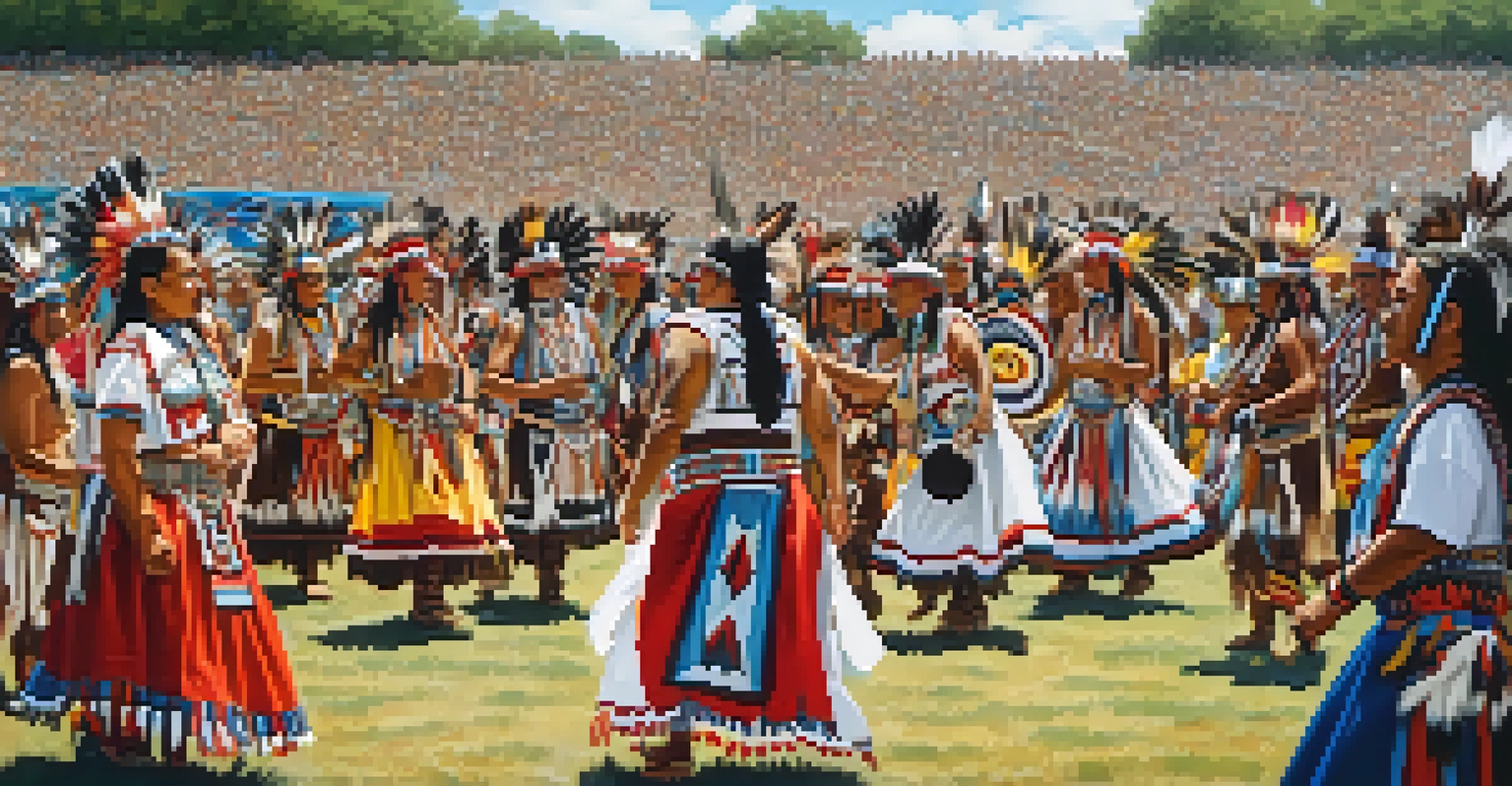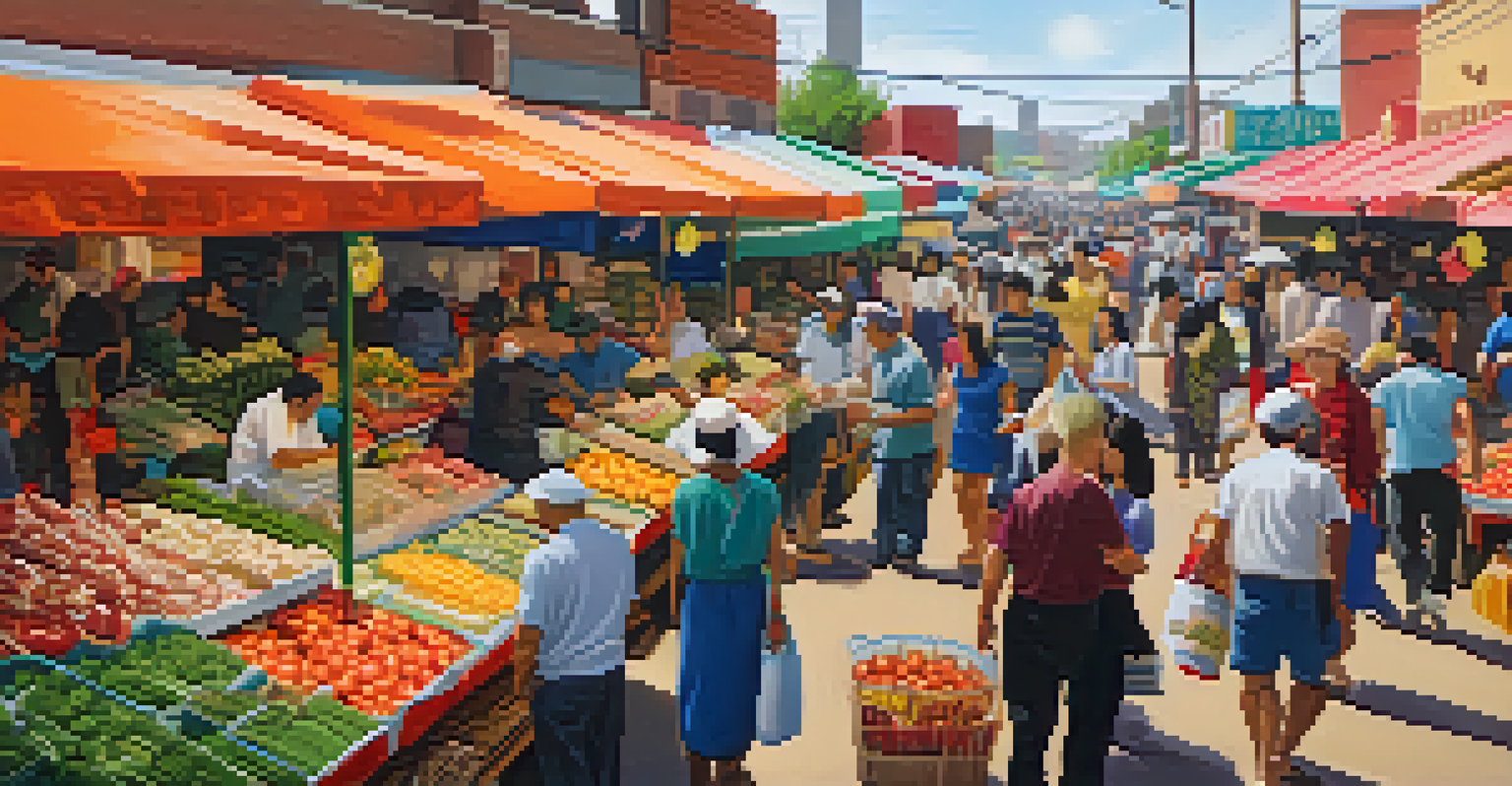Contemporary Texas: A Melting Pot of Cultures and Traditions

A Brief Overview of Texas's Cultural Landscape
Texas is a vast state known for its rich tapestry of cultures and traditions. From the bustling cities to the quiet towns, each region boasts unique influences that reflect its historical roots. This melting pot is not just a feature of the past; it continues to evolve with each passing year.
Diversity is not about how we differ. Diversity is about embracing one another's uniqueness.
The state's history is marked by various waves of immigration, each bringing their own customs, languages, and cuisines. For instance, the impact of Mexican heritage is incredibly significant, especially in southern Texas, where vibrant festivals and delicious food reflect this deep connection. What’s more, communities from Europe, Asia, and Africa have all left their marks, making Texas a true mosaic.
Today, Texas stands as a testament to how different cultures can coexist and thrive together. This blend not only enriches the lives of Texans but also makes the state a fascinating destination for visitors eager to experience its diverse traditions.
The Influence of Mexican Culture in Texas
Mexican culture holds a prominent place in Texas, shaping everything from language to food. Celebrations like Cinco de Mayo and Día de los Muertos showcase the vibrancy of these traditions, drawing in attendees who are eager to participate in the festivities. The sounds of mariachi music and the tastes of tamales resonate throughout many communities.

Moreover, the influence extends into everyday life, with Tex-Mex cuisine becoming a beloved staple. Dishes like enchiladas and queso are not just meals; they represent a fusion of cultures that locals and visitors cherish. This culinary blend has even inspired food festivals that celebrate these rich flavors and heritage.
Texas: A Cultural Melting Pot
Texas's diverse cultural landscape is shaped by various influences, including Mexican, African American, Native American, and Asian traditions.
The lasting impact of Mexican culture can also be seen in the arts, with murals and performances reflecting the stories of generations. This cultural exchange has fostered a sense of belonging and pride among Texans, regardless of their background.
Celebrating African American Heritage in Texas
African American heritage is a vital part of Texas's cultural fabric, contributing to the state's identity in profound ways. From music genres like blues and jazz that originated in African American communities to the rich storytelling traditions, this culture celebrates resilience and creativity. Events such as Juneteenth are not just historical commemorations; they are vibrant celebrations of freedom and heritage.
Culture is the widening of the mind and of the spirit.
The influence of African American culture is particularly felt in cities like Houston and Dallas, where the arts scene thrives. Local theaters, galleries, and festivals showcase the talents of African American artists, musicians, and writers, ensuring their contributions are recognized and celebrated. This artistic expression fosters community and educates others about the rich history and contributions of African Americans in Texas.
Additionally, African American cuisine, with its soul food roots, has become beloved across the state. Dishes like gumbo and fried chicken are enjoyed by many, illustrating how culinary traditions can bring people together, no matter their background.
The Role of Native American Tribes in Texas Culture
Texas is home to several Native American tribes, each with its own distinct traditions and histories. These tribes, including the Comanche and Apache, have contributed to the state’s cultural landscape long before it became known as Texas. Today, many tribes work to preserve their languages, art, and customs, ensuring their rich heritage continues to thrive.
Events like powwows and cultural festivals provide opportunities for both Native and non-Native Texans to come together, learn, and celebrate. These gatherings showcase traditional dances, crafts, and storytelling, offering a glimpse into the vibrant cultures of Texas's indigenous peoples. They serve as a reminder of the deep-rooted history that exists within the state.
Festivals Celebrate Cultural Diversity
Lively events and festivals across Texas showcase the state's rich heritage and foster community connections among diverse cultural groups.
Moreover, the influence of Native American culture can be seen in modern art, music, and even names of cities and landmarks. This ongoing presence highlights the importance of honoring and acknowledging the contributions of Native American tribes to the identity of Texas.
Asian Influences Shaping Texas Communities
Asian cultures have made significant contributions to Texas, particularly in urban areas like Houston and Dallas. The diverse communities of Vietnamese, Chinese, Indian, and Filipino Texans have enriched the state with their unique traditions and cuisines. These cultural influences are celebrated through festivals, markets, and restaurants that showcase their vibrant heritage.
For instance, the Lunar New Year is celebrated by many Asian communities in Texas, featuring parades, dragon dances, and traditional foods. These events not only highlight the cultural significance but also foster understanding and respect among different communities. The blending of these traditions has resulted in a rich social tapestry that characterizes contemporary Texas.
Additionally, the popularity of Asian cuisine, from pho to dim sum, has made it a staple in many Texan households. This culinary diversity encourages exploration and appreciation for different cultures, showcasing how food can bridge gaps and create connections between diverse communities.
The Impact of Immigration on Texas Culture
Immigration plays a crucial role in shaping the cultural landscape of Texas. Over the years, people from various countries have settled in the state, bringing their customs, languages, and traditions. This influx of diverse populations has not only enriched local communities but has also influenced Texas's identity on a larger scale.
As new immigrants contribute to the economy, they also share their unique perspectives and traditions, fostering a sense of multiculturalism. From neighborhood festivals to cultural events, these gatherings celebrate the richness of Texas's diversity, allowing residents to learn from one another and build connections.
Embracing Diversity for the Future
As Texas evolves, embracing multiculturalism and promoting cultural understanding will be essential for creating an inclusive environment.
Furthermore, the blending of cultures can be seen in everyday life, from bilingual signs in businesses to diverse dining options in restaurants. This ongoing evolution showcases how Texas embraces its multicultural identity, making it a place where everyone can find a sense of belonging.
Arts and Festivals: A Celebration of Diversity
Texas is known for its lively arts scene and diverse festivals that celebrate its rich cultural heritage. Events like the Houston Art Car Parade and the San Antonio Fiesta draw in crowds eager to witness the creativity and traditions that define Texas. These festivals provide a platform for artists from various backgrounds to showcase their work and share their stories.
Music is another vital aspect of Texas culture, with genres ranging from country and blues to Tejano and hip-hop. Festivals dedicated to these music styles, such as South by Southwest (SXSW), highlight the state's eclectic soundscape and the artists who contribute to it. This celebration of music and art fosters a sense of unity among Texans and invites others to experience the state's cultural richness.

Moreover, local galleries and theaters often feature works that reflect the diverse narratives of Texas's communities. This artistic representation encourages dialogue and understanding, bridging cultural gaps and emphasizing the importance of inclusivity in the arts.
Looking Ahead: The Future of Texas's Cultural Landscape
As Texas continues to grow and change, its cultural landscape will also evolve. The blending of traditions and the arrival of new communities will shape the future identity of the state. Embracing diversity and fostering inclusivity will be crucial in ensuring that Texas remains a welcoming environment for all.
Educational initiatives that promote cultural understanding will play a significant role in this evolution. By teaching future generations about the rich tapestry of traditions that make up Texas, we can encourage respect and appreciation for one another's backgrounds. This foundation will help build stronger, more connected communities.
In conclusion, Texas stands as a vibrant melting pot, where cultures intertwine and flourish together. As we look to the future, the continued celebration of this diversity will ensure that Texas remains a dynamic and inclusive place for all its residents.